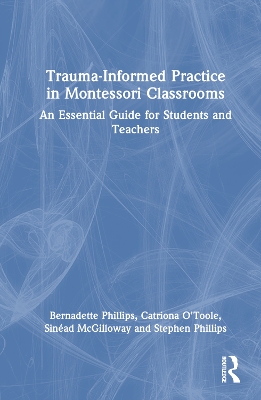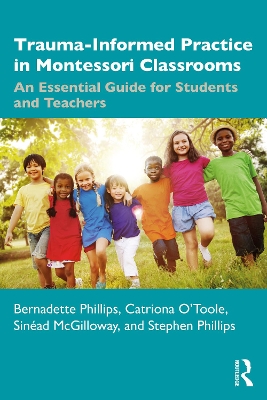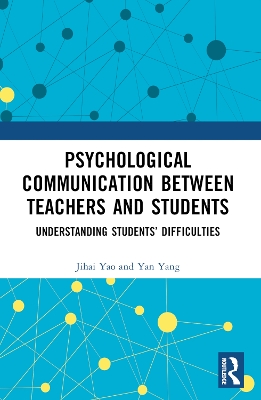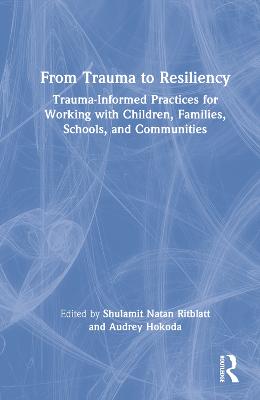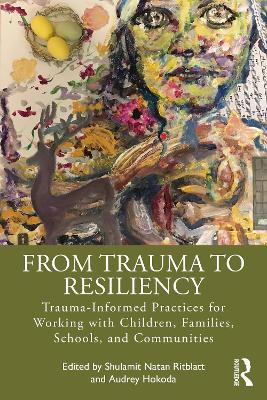Trauma-Informed Teaching in Your Elementary Classroom
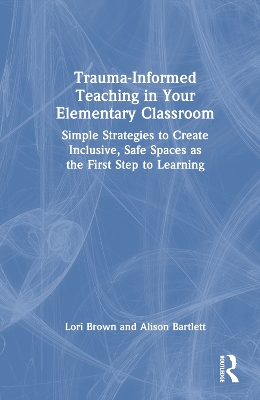 portes grátis
portes grátis
Trauma-Informed Teaching in Your Elementary Classroom
Simple Strategies to Create Inclusive, Safe Spaces as the First Step to Learning
Bartlett, Alison; Brown, Lori
Taylor & Francis Ltd
10/2024
130
Dura
9781032707938
15 a 20 dias
Descrição não disponível.
Meet the Authors
Introduction
Part 1- The Why
Chapter 1 - Understanding Trauma
The Human Nervous System
Sympathetic and Parasympathetic Systems
Memories: Regular and Traumatic
Post Traumatic Stress Disorder (PTSD)
Fight, Flight, Freeze, and Fawn (FFFFs)
Fight/Flight
Freeze
Fawn
Chronic Stress and Changes to the Brain
Epigenetics
Brain Connections
Exposure to Stress Hormones
War
Answers to Brain Breaks
References
Chapter 2 - Intergenerational Trauma
Back to ACEs
Prenatal
Epigenetics
FASD
Cigarettes
Maternal Nutrition
Postnatal
Attachment Theory
Historic Trauma
Reserves
Residential Schools
First Nations and the Courts
Sixties Scoop
Inuit Housing Today
Slavery and Its Legacy in the USA
Answers to Brain Breaks
References
Part 2 - The How
Chapter 3 - Culture
Biases
Unconscious Bias
Resource Bias
Deficit Thinking
Ethnocentricism
Trust
Cultural Humility and Cultural Competence
Case Study: Forest Glen School (K-4) Moncton, New Brunswick, Canada
Culturally Responsive Teaching
Resources
Answers to Brain Breaks
References
Chapter 4 - Safety and Predictability
Attachment
Mirror Neurons
Identifying and Removing Triggers
Answers to Brain Breaks
References
Chapter 5 - Cognitive-Behavioral Theory
What is Cognitive Behavior Theory?
How Does CBT Work?
CBT: Body?Brain
Social Emotional Learning (SEL) Resources for You and Your Students
Flow
Reflective Listening
Reflective Feeling
CBT: Brain?Body
Recognizing and Challenging Thoughts
Social Emotional Learning (SEL) For Your K-3 Students
Social Emotional Learning (SEL) For Your Grade 4-6 Students
CBT for Teachers
Brain Break Answers
Resources
References
Conclusion
Introduction
Part 1- The Why
Chapter 1 - Understanding Trauma
The Human Nervous System
Sympathetic and Parasympathetic Systems
Memories: Regular and Traumatic
Post Traumatic Stress Disorder (PTSD)
Fight, Flight, Freeze, and Fawn (FFFFs)
Fight/Flight
Freeze
Fawn
Chronic Stress and Changes to the Brain
Epigenetics
Brain Connections
Exposure to Stress Hormones
War
Answers to Brain Breaks
References
Chapter 2 - Intergenerational Trauma
Back to ACEs
Prenatal
Epigenetics
FASD
Cigarettes
Maternal Nutrition
Postnatal
Attachment Theory
Historic Trauma
Reserves
Residential Schools
First Nations and the Courts
Sixties Scoop
Inuit Housing Today
Slavery and Its Legacy in the USA
Answers to Brain Breaks
References
Part 2 - The How
Chapter 3 - Culture
Biases
Unconscious Bias
Resource Bias
Deficit Thinking
Ethnocentricism
Trust
Cultural Humility and Cultural Competence
Case Study: Forest Glen School (K-4) Moncton, New Brunswick, Canada
Culturally Responsive Teaching
Resources
Answers to Brain Breaks
References
Chapter 4 - Safety and Predictability
Attachment
Mirror Neurons
Identifying and Removing Triggers
Answers to Brain Breaks
References
Chapter 5 - Cognitive-Behavioral Theory
What is Cognitive Behavior Theory?
How Does CBT Work?
CBT: Body?Brain
Social Emotional Learning (SEL) Resources for You and Your Students
Flow
Reflective Listening
Reflective Feeling
CBT: Brain?Body
Recognizing and Challenging Thoughts
Social Emotional Learning (SEL) For Your K-3 Students
Social Emotional Learning (SEL) For Your Grade 4-6 Students
CBT for Teachers
Brain Break Answers
Resources
References
Conclusion
Este título pertence ao(s) assunto(s) indicados(s). Para ver outros títulos clique no assunto desejado.
Trauma-informed;Childhood trauma;Inclusive teaching;Inclusive schools;Cognitive behavioral approaches;Attachment theory;child development
Meet the Authors
Introduction
Part 1- The Why
Chapter 1 - Understanding Trauma
The Human Nervous System
Sympathetic and Parasympathetic Systems
Memories: Regular and Traumatic
Post Traumatic Stress Disorder (PTSD)
Fight, Flight, Freeze, and Fawn (FFFFs)
Fight/Flight
Freeze
Fawn
Chronic Stress and Changes to the Brain
Epigenetics
Brain Connections
Exposure to Stress Hormones
War
Answers to Brain Breaks
References
Chapter 2 - Intergenerational Trauma
Back to ACEs
Prenatal
Epigenetics
FASD
Cigarettes
Maternal Nutrition
Postnatal
Attachment Theory
Historic Trauma
Reserves
Residential Schools
First Nations and the Courts
Sixties Scoop
Inuit Housing Today
Slavery and Its Legacy in the USA
Answers to Brain Breaks
References
Part 2 - The How
Chapter 3 - Culture
Biases
Unconscious Bias
Resource Bias
Deficit Thinking
Ethnocentricism
Trust
Cultural Humility and Cultural Competence
Case Study: Forest Glen School (K-4) Moncton, New Brunswick, Canada
Culturally Responsive Teaching
Resources
Answers to Brain Breaks
References
Chapter 4 - Safety and Predictability
Attachment
Mirror Neurons
Identifying and Removing Triggers
Answers to Brain Breaks
References
Chapter 5 - Cognitive-Behavioral Theory
What is Cognitive Behavior Theory?
How Does CBT Work?
CBT: Body?Brain
Social Emotional Learning (SEL) Resources for You and Your Students
Flow
Reflective Listening
Reflective Feeling
CBT: Brain?Body
Recognizing and Challenging Thoughts
Social Emotional Learning (SEL) For Your K-3 Students
Social Emotional Learning (SEL) For Your Grade 4-6 Students
CBT for Teachers
Brain Break Answers
Resources
References
Conclusion
Introduction
Part 1- The Why
Chapter 1 - Understanding Trauma
The Human Nervous System
Sympathetic and Parasympathetic Systems
Memories: Regular and Traumatic
Post Traumatic Stress Disorder (PTSD)
Fight, Flight, Freeze, and Fawn (FFFFs)
Fight/Flight
Freeze
Fawn
Chronic Stress and Changes to the Brain
Epigenetics
Brain Connections
Exposure to Stress Hormones
War
Answers to Brain Breaks
References
Chapter 2 - Intergenerational Trauma
Back to ACEs
Prenatal
Epigenetics
FASD
Cigarettes
Maternal Nutrition
Postnatal
Attachment Theory
Historic Trauma
Reserves
Residential Schools
First Nations and the Courts
Sixties Scoop
Inuit Housing Today
Slavery and Its Legacy in the USA
Answers to Brain Breaks
References
Part 2 - The How
Chapter 3 - Culture
Biases
Unconscious Bias
Resource Bias
Deficit Thinking
Ethnocentricism
Trust
Cultural Humility and Cultural Competence
Case Study: Forest Glen School (K-4) Moncton, New Brunswick, Canada
Culturally Responsive Teaching
Resources
Answers to Brain Breaks
References
Chapter 4 - Safety and Predictability
Attachment
Mirror Neurons
Identifying and Removing Triggers
Answers to Brain Breaks
References
Chapter 5 - Cognitive-Behavioral Theory
What is Cognitive Behavior Theory?
How Does CBT Work?
CBT: Body?Brain
Social Emotional Learning (SEL) Resources for You and Your Students
Flow
Reflective Listening
Reflective Feeling
CBT: Brain?Body
Recognizing and Challenging Thoughts
Social Emotional Learning (SEL) For Your K-3 Students
Social Emotional Learning (SEL) For Your Grade 4-6 Students
CBT for Teachers
Brain Break Answers
Resources
References
Conclusion
Este título pertence ao(s) assunto(s) indicados(s). Para ver outros títulos clique no assunto desejado.

